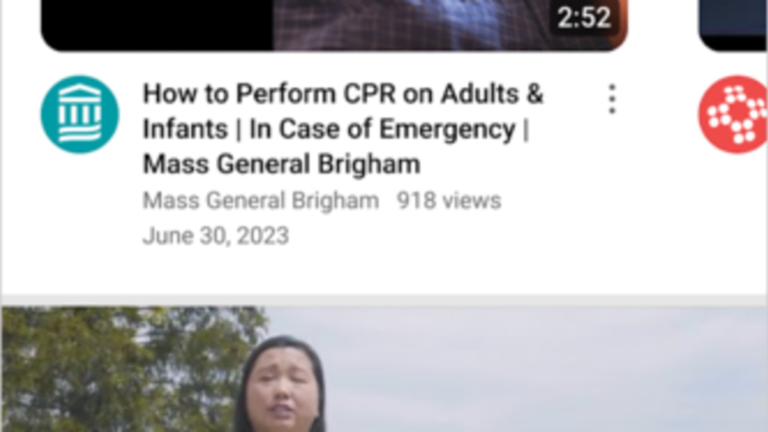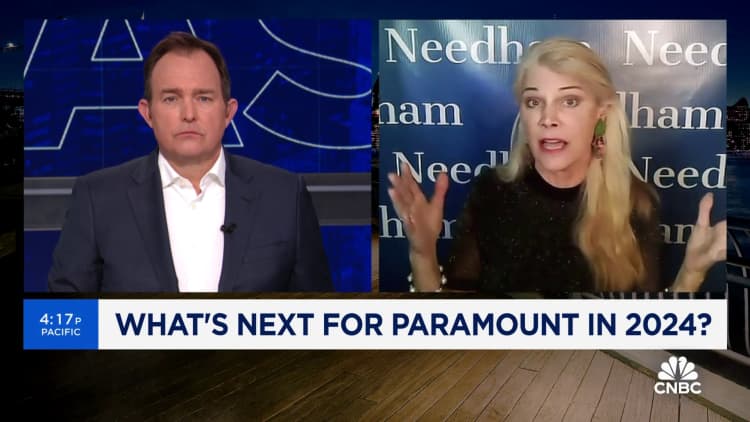
[ad_1]
People walk past a billboard advertisement for YouTube in Berlin, Germany, on Sept. 27, 2019.
Sean Gallup | Getty Images
YouTube is taking steps to fight against medical misinformation, especially when it comes to finding immediate tips on how to handle an emergency.
The company on Wednesday introduced a feature called First Aid Information Shelves, a library of step-by-step videos that show people what to do if they’re witnessing a drug overdose, heart attack or other life-threatening event.
Videos from accredited health organizations such as Mass General Brigham will appear pinned to the top of relevant search results so they’re easy to discover. YouTube users in the U.S. can find videos on 12 topics, including CPR, seizures, choking, bleeding and psychosis. Most are a minute or two long.
“The whole idea is timing and conciseness and trying to share that information as easily as possible,” Garth Graham, global head of health care and public health at YouTube, told CNBC in an interview. Graham said people should always call first responders right away in the case of an emergency.
The videos will not contain ads, which means Google-owned YouTube won’t make money from them, Graham said.
YouTube was not involved with the content creation, which Graham said was left to experts. In addition to Mass General Brigham, health organizations such as the Mexican Red Cross and the American Heart Association have partnered with YouTube to help make the videos.
Content moderation has long been a challenge for YouTube, which removes videos if they’re found to be in violation of the company’s guidelines. The process is often slow and costly. Medical misinformation became a bigger problem during the Covid-19 pandemic due to the constant spreading of inaccurate messaging related to the effectiveness of vaccines and masks.
In July 2021, more than a year after the onset of the pandemic, YouTube announced plans to label videos and promote credible sources after facing criticism for its role in spreading misinformation. The company banned several high-profile anti-vaxxer accounts and said in September of that year that it had removed more than 130,000 videos for violating its Covid policies.
Even as the pandemic has subsided, medical misinformation continues to proliferate. Researchers recently found that popular videos on YouTube about insomnia and sleep contain both “misinformation and commercial bias,” according to a study in the Journal of Clinical Sleep Medicine.
YouTube announced a new framework for combating medical misinformation in August, outlining how the site will remove content that contradicts established guidance from health officials on subjects including cancer, Covid and reproductive health.
An example of what First Aid Information Shelves will look like on YouTube.
‘First videos that you see’
Mass General Brigham, the largest health-care system in Massachusetts, started officially partnering with YouTube in 2021 “to offer patients easier access to credible medical information,” according to a press release at the time.
The organization has a dedicated content team with an expertise in medical education that determines the topics and substance of the videos, said Dr. Merranda Logan, the health system’s associate chief academic officer.
For YouTube’s First Aid Information Shelves, Mass General Brigham’s team produced 11 videos across topics such as heart attacks, strokes and seizures.
Logan said there’s a lot of medical information and misinformation online and distinguishing between the two can be a challenge. She said people should be able to turn to trusted experts in an emergency when “every minute, every second counts.”
“We wanted to make sure that these videos are the first videos that you see when you’re on YouTube and you search for any of those topics,” Logan said in an interview. “These videos really are not meant to replace calling 911, but to provide clear and concise information that can help during an emergency.”
When searching for videos on CPR, users will find content from the AHA, which writes the guidelines on the procedure and, since the late 1900s, has worked to educate people about how to handle those emergency situations.
“We have a really strong interest in partnering with our search engines that we know where people are going for content to make sure that they’re getting scientifically accurate content,” said Dr. Comilla Sasson, the AHA’s vice president for health-care business solutions for emergency cardiovascular care.
Videos will initially be available in English and Spanish, thanks to the help of the Mexican Red Cross, Graham said. Mass General Brigham is also using one of YouTube’s artificial intelligence-powered translation tools to present content in Spanish.
YouTube plans to add more topics, countries and languages in the future.
Graham said YouTube will regularly work with its partners to ensure the videos remain as accurate and up to date as possible. The shelves are part of an “ongoing evolution of information quality” at YouTube, he said.
“It’s important for us all to be prepared to respond to a series of common medical conditions that could happen to us, family, loved ones, people who are passing by,” Graham said. “We should be up to speed on that.”
WATCH: YouTube is worth $350 billion to $400 billion, says Needham’s Laura Martin
Don’t miss these stories from CNBC PRO:
[ad_2]
